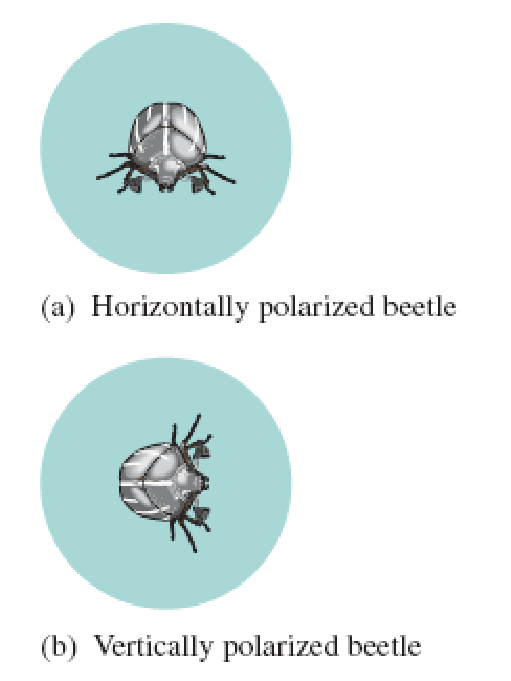2.4.3 Polarization mode distortion
Because light is an electromagnetic wave, it has a ‘state of polarization’, which, for light in single-mode fibre, is at right angles to the path of the fibre. If you've not encountered electromagnetic waves before, all you need to appreciate is that as light travels down the fibre the electromagnetic field has an orientation across the fibre (Figure 7). If it helps, you can imagine the light as a beetle crawling inside a hollow fibre, and the state of polarization as the orientation of the beetle in the fibre! (Figure 8)


In a perfect fibre, the state of polarization has no effect on the propagation. But fibres are not generally perfect – for example, the core might not be perfectly circular or there might be stress across the fibre. In that case the speed of propagation of the light depends on the state of polarization. For a slightly oval core, for example, the velocity of propagation will be different for light polarized in the widest direction compared to the narrowest direction. (Perhaps the beetle can crawl faster if the tube is wide and low than if it is narrow and high.)
For this imperfect fibre, it is necessary then to consider two polarization states with different velocities as two polarization modes. Light can travel in both modes, and because they have different velocities the existence of these two modes leads to pulse spreading and distortion, in essentially the same way as multimode distortion. (The beetle analogy is a bit stretched now. You have to imagine two beetles setting off together, one crawling across the widest direction and one across the narrowest. One beetle gets to the end before the other.)
This is known as polarization mode distortion, PMD. (PMD is also used as an acronym for polarization mode dispersion, but as explained above concerning the use of the term ‘multimode dispersion’, it is better to keep the word dispersion for effects that are frequency-dependent.)
PMD is generally very small and has only become significant as systems operating at 10 Gbit/s or 40 Gbit/s have started to appear.
